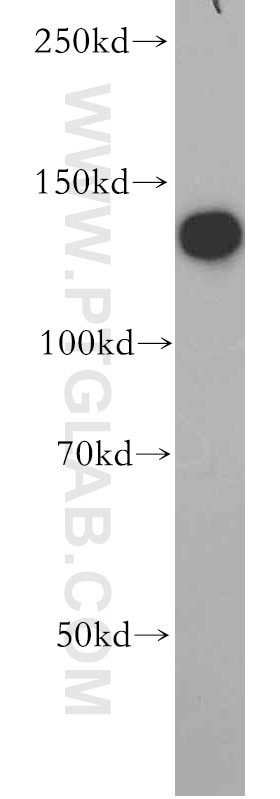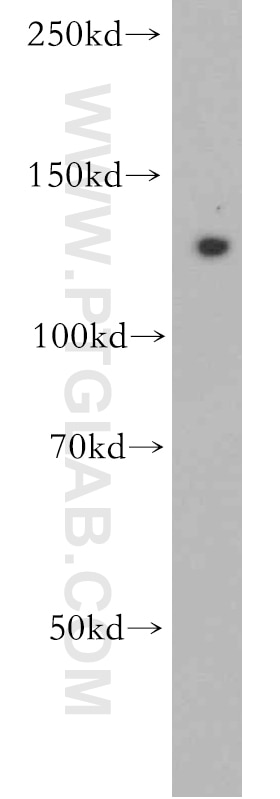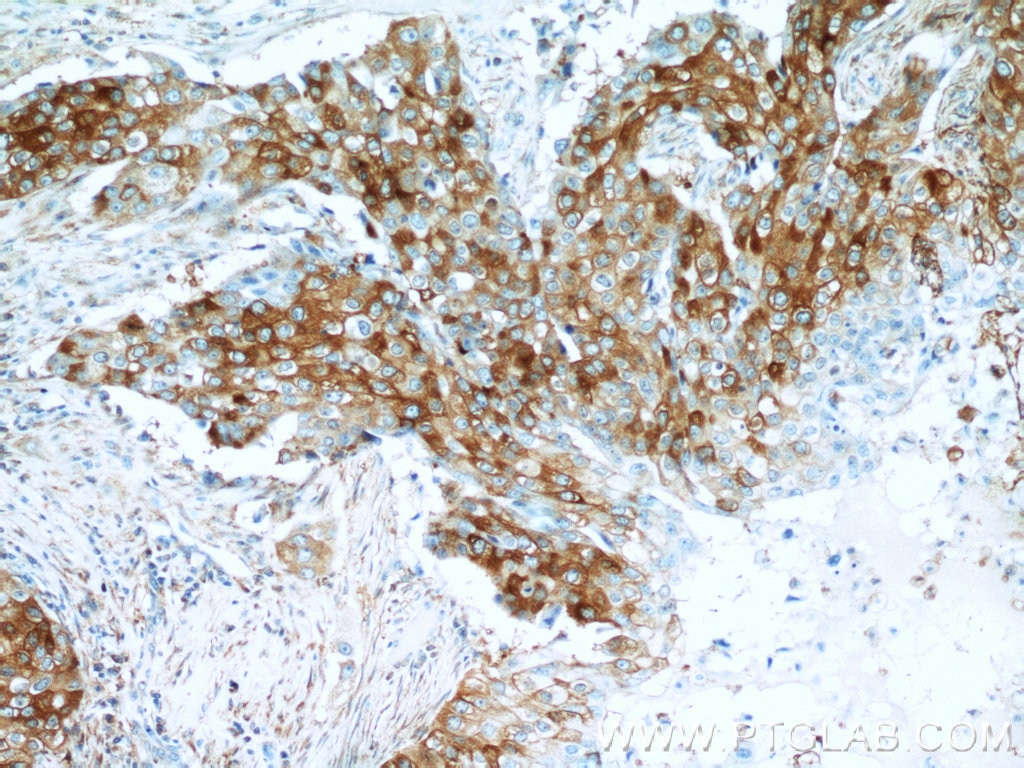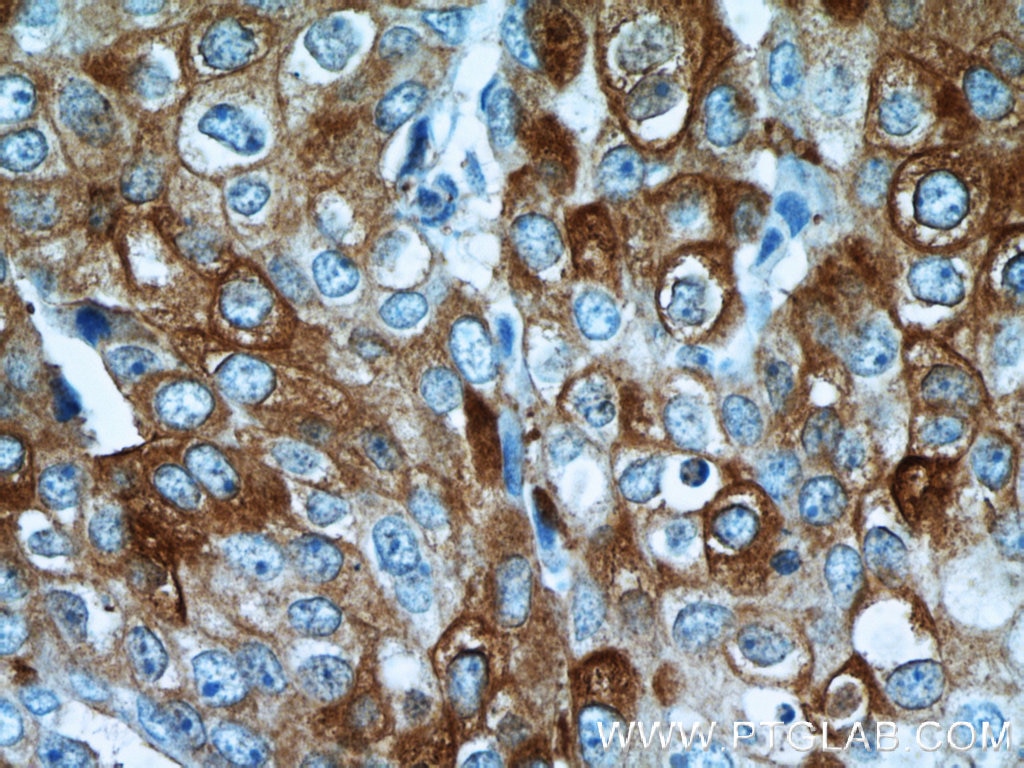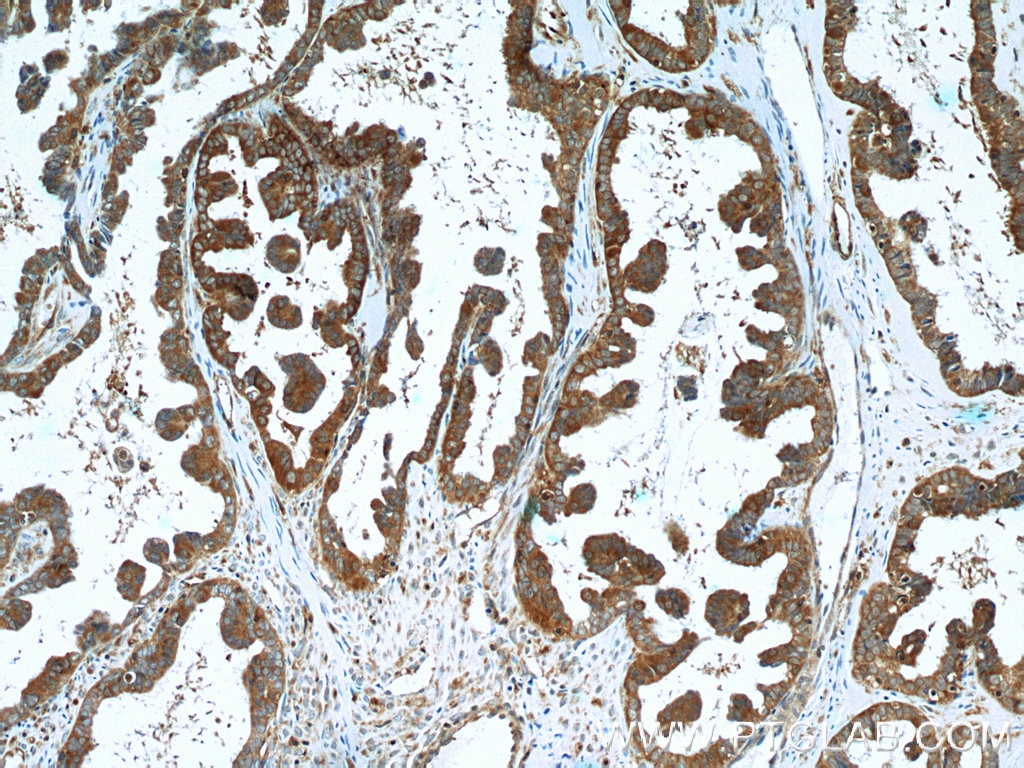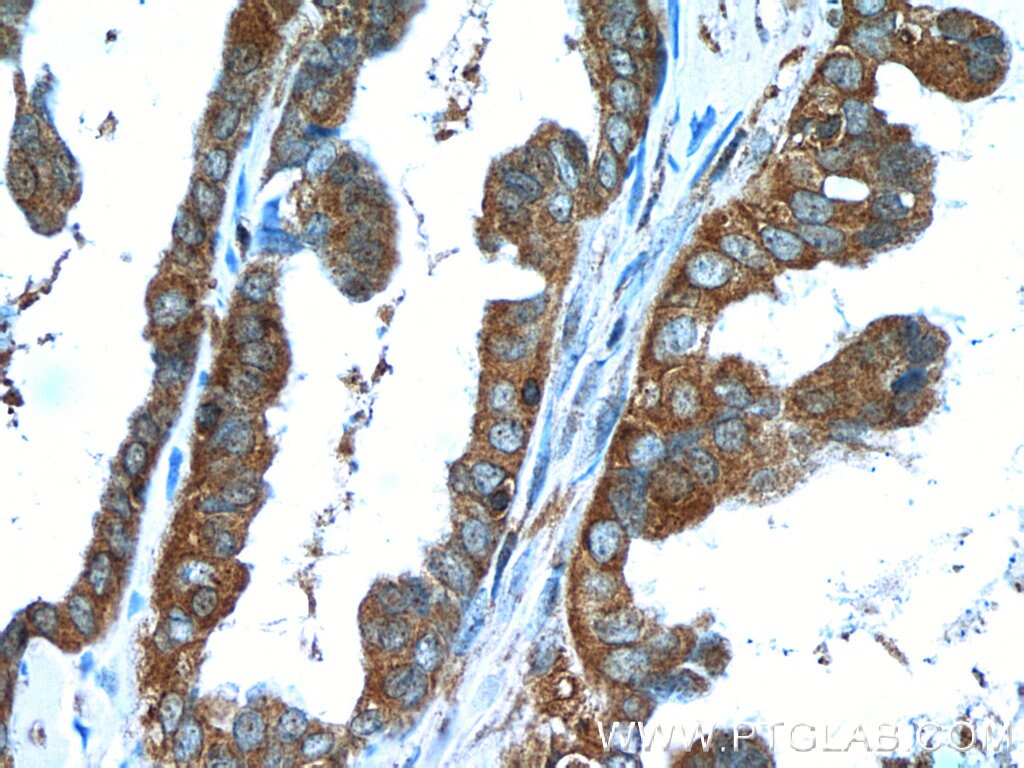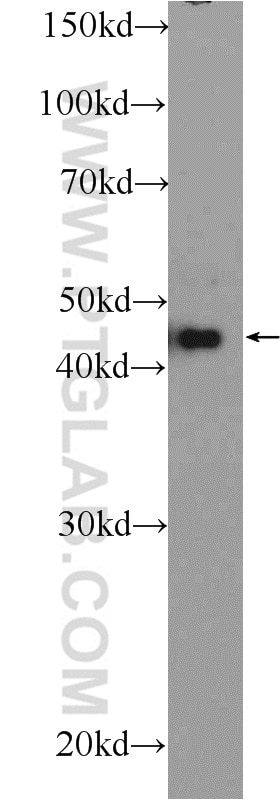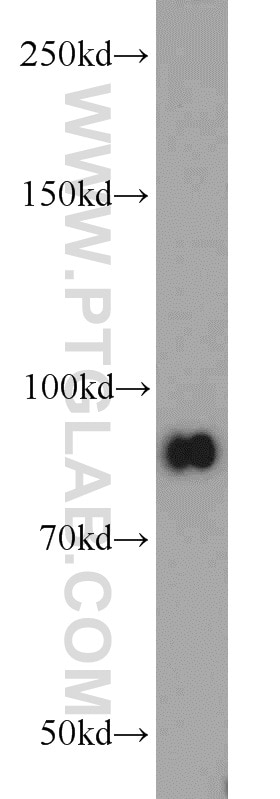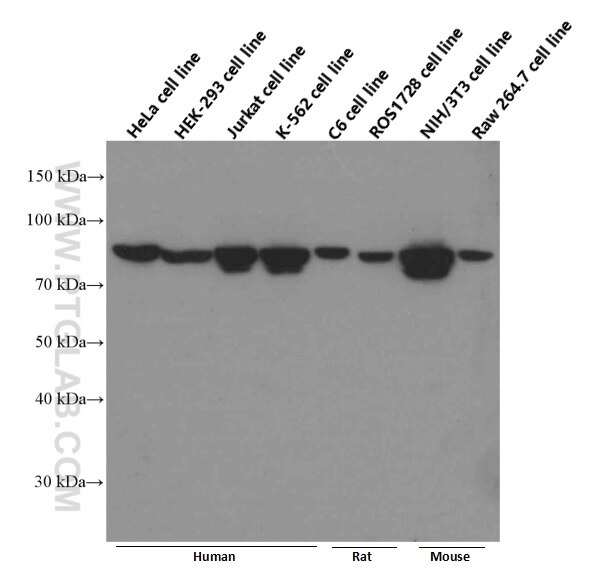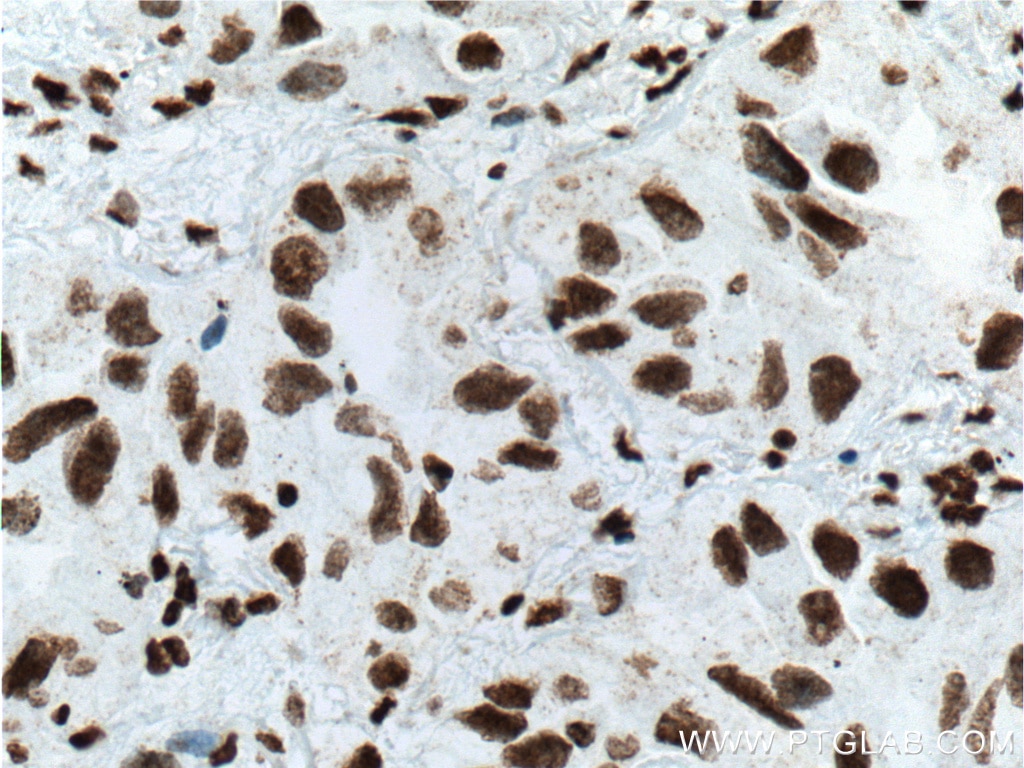ROR1 Polyclonal antibody
ROR1 Polyclonal Antibody for IHC, WB, ELISA
Host / Isotype
Rabbit / IgG
Reactivity
human, mouse, rat
Applications
WB, IHC, IF, ELISA
Conjugate
Unconjugated
Cat no : 20629-1-AP
Synonyms
Validation Data Gallery
Tested Applications
| Positive WB detected in | K-562 cells, HeLa cells |
| Positive IHC detected in | human breast cancer tissue, human ovary tumor tissue Note: suggested antigen retrieval with TE buffer pH 9.0; (*) Alternatively, antigen retrieval may be performed with citrate buffer pH 6.0 |
Recommended dilution
| Application | Dilution |
|---|---|
| Western Blot (WB) | WB : 1:500-1:2000 |
| Immunohistochemistry (IHC) | IHC : 1:20-1:200 |
| It is recommended that this reagent should be titrated in each testing system to obtain optimal results. | |
| Sample-dependent, Check data in validation data gallery. | |
Published Applications
| WB | See 2 publications below |
| IHC | See 3 publications below |
| IF | See 1 publications below |
Product Information
The immunogen of 20629-1-AP is ROR1 Fusion Protein expressed in E. coli.
| Tested Reactivity | human, mouse, rat |
| Cited Reactivity | human, rat |
| Host / Isotype | Rabbit / IgG |
| Class | Polyclonal |
| Type | Antibody |
| Immunogen | ROR1 fusion protein Ag14586 |
| Full Name | receptor tyrosine kinase-like orphan receptor 1 |
| Calculated Molecular Weight | 937 aa, 104 kDa |
| Observed Molecular Weight | 130-140 kDa |
| GenBank Accession Number | BC006374 |
| Gene Symbol | ROR1 |
| Gene ID (NCBI) | 4919 |
| RRID | AB_10694571 |
| Conjugate | Unconjugated |
| Form | Liquid |
| Purification Method | Antigen affinity purification |
| Storage Buffer | PBS with 0.02% sodium azide and 50% glycerol pH 7.3. |
| Storage Conditions | Store at -20°C. Stable for one year after shipment. Aliquoting is unnecessary for -20oC storage. 20ul sizes contain 0.1% BSA. |
Background Information
ROR1 is a member of the RTK family of orphan receptors related to muscle specific kinase and Trk neurotrophin receptors (PMID: 18546292). ROR1 is primarily expressed by neural crest cells during embryogenesis. High expression of ROR1 is reported in many types of malignancies and is thought to be involved in tumor growth, apoptosis, and epithelial-mesenchymal transition (PMID: 26245996). The human ROR1 gene encodes a 937-amino acid protein with an Ig-like domain, a cysteine-rich domain, a kringle domain, a tyrosine kinase domain and a proline-rich domain. The calculated molecular weight of ROR1 is 104 kDa, but ROR1 has multiple N-glycosylation sites that generate post-translationally modified ROR1 at 130 kDa (PMID: 24752542).
Protocols
| Product Specific Protocols | |
|---|---|
| WB protocol for ROR1 antibody 20629-1-AP | Download protocol |
| IHC protocol for ROR1 antibody 20629-1-AP | Download protocol |
| Standard Protocols | |
|---|---|
| Click here to view our Standard Protocols |
Publications
| Species | Application | Title |
|---|---|---|
Virchows Arch Expression of ROR1 has prognostic significance in triple negative breast cancer. | ||
Biomedicines ROR1 Is Expressed in Diffuse Large B-Cell Lymphoma (DLBCL) and a Small Molecule Inhibitor of ROR1 (KAN0441571C) Induced Apoptosis of Lymphoma Cells. | ||
Cancer Manag Res Wnt5a induces ROR1 and ROR2 to activate RhoA in esophageal squamous cell carcinoma cells. | ||
Am J Physiol Cell Physiol Periodontal Ligaments Enhance Neurite Outgrowth in Trigeminal Ganglion Neurons through Wnt5a Production Induced by Mechanical Stimulation | ||
Pharmaceutics A Small Molecule Targeting the Intracellular Tyrosine Kinase Domain of ROR1 (KAN0441571C) Induced Significant Apoptosis of Non-Small Cell Lung Cancer (NSCLC) Cells |
